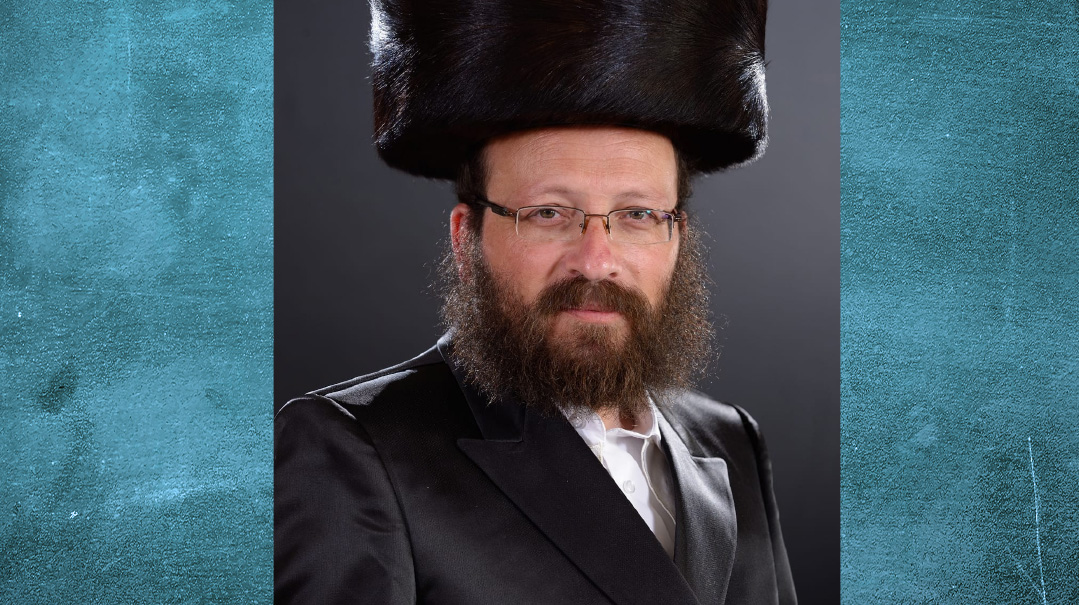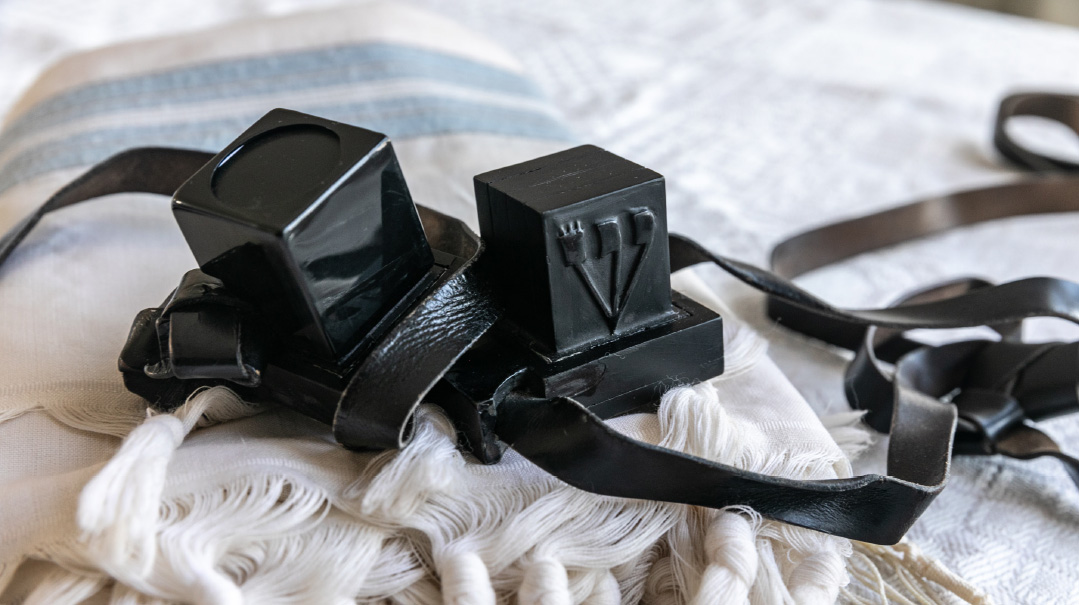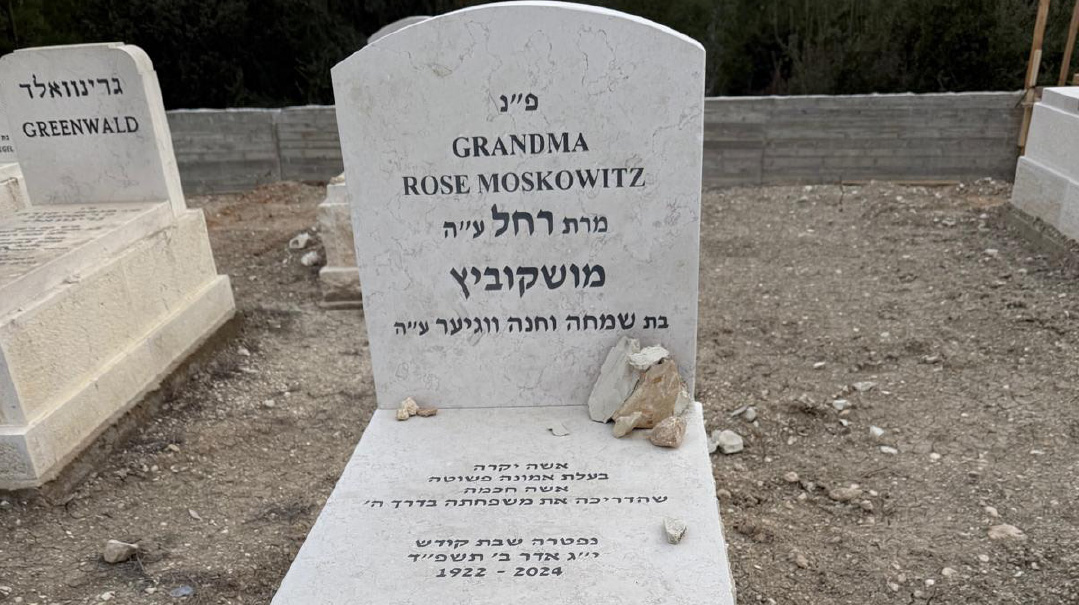Faith Above All
| February 14, 2023“Someone forwarded me your shiur,” the woman said. “And I was wondering — can I share something with you?”

“Hello?” said an unfamiliar woman’s voice. “Is this Rabbi Greenblatt?”
“Yes,” I answered.
“Rabbi Greenblatt who gave the shiur for the Shnayim Yomi organization?”
“Yes, I did record a shiur this week for Shnayim Yomi,” I said.
The Shnayim Yomi organization encourages people to learn an aliyah each day of the weekly parshah, sending out two- to three-minute video clips to over 4,000 recipients on the daily section of the weekly parshah. At the end of each week, there’s a longer five-minute clip, generally containing a mussar idea.
The week of parshas Bo, I highlighted the words of the famous Ramban found at the end of the parshah, where he discusses the importance of believing in nissim nistarim, concealed miracles. The Ramban firmly states that one does not have a chelek, a portion in Toras Moshe, unless he believes in concealed miracles — i.e., that all of the events that transpire in our lives cannot be attributed to teva, nature, or “the way things work.” Rather, they are all predetermined by Hashem, and in fact are nissim nistarim.
In my shiur, I identified the timeless words of this Ramban as the primary focus of the chinuch we should be giving our children, and implored parents to harness every available opportunity to ingrain this truth in their children’s minds, to inculcate in their hearts the belief that even what appears to be “natural” is actually guided by a Divine Hand. Natural patterns and orders are nothing other than a gezeirah from Hashem, and their outcome is determined solely by our faithful fulfillment of His mitzvos.
“Someone forwarded me your shiur,” the woman said. “And I was wondering — can I share something with you?”
“Sure,” I agreed, and Mrs. Miller told me an incredibly sobering story.
“Three years ago,” she said, “my husband and I lost our only son. He had been only 48 years old.”
For 28 years, her son, Rav Tzvi Dov Miller, had taught second-grade boys in a well-known cheder in Yerushalayim. He was a skilled rebbi, and in 28 years of teaching he never asked a single child to leave the classroom. Several of his students were so inspired by his masterful approach that they themselves become educators. Others triumphed over many personal challenges, attributing their success to Rav Miller’s guidance and inspiration.
For many years, Rav Miller taught the first five parshiyos of Sefer Shemos: Shemos, Va’eira, Bo, Beshalach, and Yisro. After teaching the same material for many years, Rav Miller reached a point where he wanted to start teaching parshas Mishpatim instead. The children had already learned the story of Yetzias Mitzrayim in previous years, and he believed that he had the skills and experience to teach them new, complex material they hadn’t yet encountered.
But when Rav Miller approached his principal and asked for permission to make this switch, the principal flatly refused. He was adamant that it was impossible to teach such a challenging parshah to second graders. After taking in the principal’s firm stance, Rav Miller deferred to his opinion.
Ten years later, a new principal took the helm of the school. Once again, Rav Miller approached him and asked for permission to teach parshas Mishpatim. While this principal also thought the boys would have difficulty comprehending the complexities of the parshah, he said he would allow it — on condition that the boys take regular oral tests to assess their mastery of the material. Rav Miller readily agreed.
Throughout the beginning of that year, Rav Miller’s second-grade students learned parshas Mishpatim. They excelled in all of the oral tests, demonstrating a command of the parshah that was, at times, superior to those testing them. The plan was working perfectly… until a near-tragedy happened in the classroom.
Rav Miller was teaching the pasuk “me’im mizbechi tikachenu lamus,” which teaches that a Kohein who’s been sentenced to death should be taken to have his sentence executed, even if he is in the midst of performing the avodah. While uttering these words, Rav Miller collapsed.
A fellow rebbi dragged his limp body out of the classroom, and an ambulance was called. In the hospital, careful examination revealed that Rav Miller had suffered an aneurysm. He was unconscious but breathing on his own. The doctors rushed him into an emergency procedure, and after a few days he regained consciousness.
After he had been released and was recovering at home, his substitute called him. He explained that while he knew the class had been learning parshas Mishpatim, he didn’t feel equipped to teach this complex material, and requested permission to teach the boys the earlier parshiyos in Sefer Shemos that discuss Yetzias Mitzrayim. Left with little choice, Rav Miller agreed.
Rav Miller was very shaken, and even after he had sufficiently recovered to return to the classroom, he was very anxious to know why this had happened to him. He davened intensely that Hashem reveal the reason why he had suffered the aneurysm, and almost immediately, he dreamt a dream.
He saw himself brought before the Beis Din shel Maalah and seated at a very big table covered with a white tablecloth. There, he was informed that he had been summoned for litigation. To his shock, the litigants were the parshiyos of Shemos, Va’eira, Bo, Beshalach, and Yisro; a sefer on the table lay open to those parshiyos and as a seasoned baal korei, Rav Miller recognized the words instantly.
The parshiyos accused him of committing a serious crime. “In our pesukim” they explained, “you find the core ideas of emunah that every Jewish child needs to study and internalize. When you taught these parshiyos to young, impressionable children, you were giving them the foundational faith that they need for their lives as Jews. They weren’t simply covering ground — they were absorbing some of the most important lessons of their lives.
“Mi samcha sar v’shofet l’daleg aleinu — who gave you the authority to skip us?” they charged him. “You will have to pay a heavy price for your decision to teach parshas Mishpatim instead.”
In his defense, Rav Miller made the claim that the Gemara forbids punishing someone without first warning them, and he hadn’t been warned in any way.
His claim was accepted by the Beis Din, and it was decided that the aneurysm itself would serve as his warning.
Two additional merits were found in Rav Miller’s favor — the time he had relented when the former principal didn’t want him to teach Mishpatim, and the fact that he’d granted permission to the substitute rebbi to revert to the original curriculum.
After this sobering dream, Rav Miller undertook to complete Shas Bavli during the hours that he wasn’t teaching. He understood that he was living on borrowed time. It would be the sixth time in his life that he finished Shas. For six years, he kept to his rigorous learning schedule and managed to complete Shas.
Six years after the aneurysm, while asleep on a Friday night, the holy neshamah of Tzvi Dov z”l ben Meir Eliyahu yibadel l’chayim tovim was summoned to Shamayim. This time, it did not return.
More than one thousand friends, relatives, and students gathered to escort Rav Miller to his final resting place on Har Hazeisim, and to offer comfort and solace to his wife and five children.
“When my husband and I heard you speak about the importance of teaching our children to see the world through the lens of nissim nistarim,” Mrs. Miller told me, “we got goosebumps.” They vividly remembered the din Torah their son had told them about, and the message of the shiur echoed the message of the parshiyos at the din Torah, nearly word for word.
“My husband and I believe,” Mrs. Miller concluded, “that the reason our son was given an additional six years of life was in the merit of the six parshiyos he so skillfully taught. Five years for the parshiyos of Shemos, Va’eira, Bo, Beshalach, and Yisro, and one additional year for Mishpatim.”
Though those six years came to an end, Rav Miller’s lessons still resound: the lessons he taught during his lifetime, and the lesson he taught upon his passing — of the primacy of emunah, and our sacred obligation to instill it in our children as they form their view of the world and its Creator.
L’illui nishmas Tzvi Dov z”l ben Meir Eliyahu
Rabbi Yechiel Greenblatt, a resident of Ramat Eshkol, formerly served as mashgiach ruchani of Yeshivas Ohr Yerushalayim and as a rosh kollel. He currently spearheads Smach Zevulun, an initiative that facilitates Yissachar-Zevulun partnerships at an advanced level.
(Originally featured in Mishpacha, Issue 949)
Oops! We could not locate your form.






